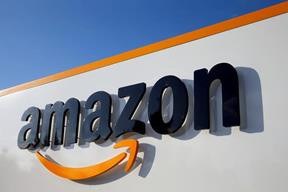Amazon.com Inc. experienced a significant drop in its stock price on Friday, falling more than 12% following a mixed second-quarter earnings report and a third-quarter forecast that fell short of Wall Street's expectations. The e-commerce giant's shares were trading at around $165, with the stock becoming one of the largest drags on the Nasdaq, poised to lose approximately $188 billion in market value if the losses hold.
In the second quarter, Amazon reported a 10% increase in revenue from a year earlier, reaching $147.98 billion, slightly below the $148.56 billion projected by analysts. Net income nearly doubled from the previous year to $1.26 per share, surpassing the expected $1.03 per share. However, this positive performance was overshadowed by the company's cautious outlook for the third quarter.
For the upcoming quarter, Amazon forecasted revenue between $154 billion and $158.5 billion, with the midpoint of $156.25 billion falling short of the consensus estimate of $158.24 billion. The company attributed the weaker outlook to consumers increasingly opting for lower-priced items and essentials, reflecting a broader trend of value-conscious behavior in the current economic climate.
Amazon CEO Andy Jassy highlighted this shift during a post-earnings call, noting that customers were "trading down on price when they could." The trend of consumers seeking cheaper options aligns with the broader market dynamics ahead of Walmart's quarterly results later this month.
Competition from discount e-commerce platforms such as Temu and Shein has intensified, further challenging Amazon's market share. "Amazon faces two challenges this year, a consumer that continues to search out lower prices and competition largely from discount sites such as Temu and Shein," said Art Hogan, chief market strategist at B. Riley Wealth.
Additionally, Amazon CFO Brian Olsavsky pointed out that a chaotic news cycle has distracted consumers, impacting their purchasing behavior. Events such as the Olympics, the upcoming presidential election, and the recent assassination attempt on former President Donald Trump have contributed to a "tough quarter to forecast."
Despite the challenges in its retail segment, Amazon's cloud computing division, Amazon Web Services (AWS), delivered strong results. AWS revenue rose 19% to $26.3 billion, exceeding analysts' expectations and providing a bright spot in the company's overall performance. Analysts at JP Morgan emphasized the importance of AWS, noting that while retail performance can vary, AWS continues to be a significant driver of Amazon's business.
"Sometimes Retail leads AMZN's business and other times it's AWS," the JP Morgan analysts wrote in a note to clients, maintaining an overweight rating on the stock. BMO Capital Markets analysts also praised the performance of AWS, highlighting its accelerated growth for the third consecutive quarter. "We believe AWS is well-positioned to benefit from a shift back to modernization, with additional benefits as new workloads are born in the cloud," the analysts stated.
Amazon's forward price-to-earnings ratio for the next 12 months stands at 33.92, compared to Alphabet's 20.46 and Microsoft's 30.88, according to LSEG data. The company is also striving to catch up with rivals Microsoft and Google in developing advanced AI technologies.






